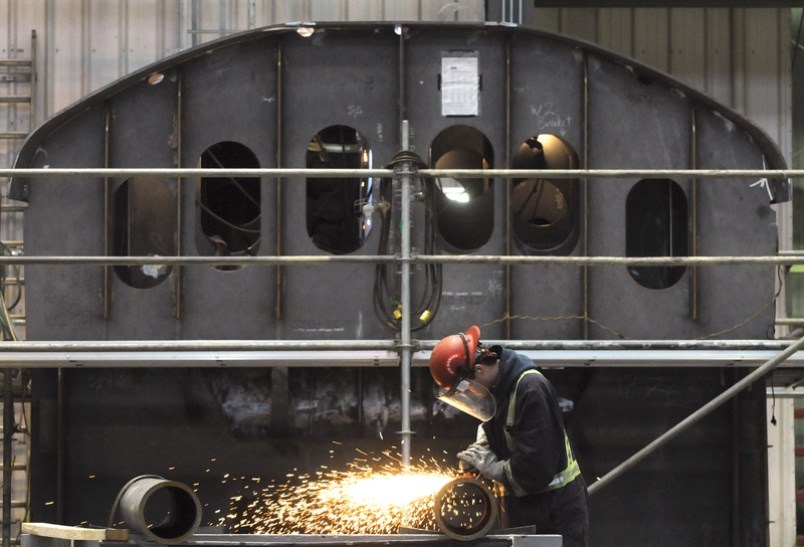Seaspan Shipyards is waiting for the federal government to approve changes to its national shipbuilding schedule that would keep its workforce busy and avoid significant layoffs.
Seaspan bosses were recently in Ottawa asking federal officials to approve a plan which could see parts of the navy’s massive joint support ships started before an oceanographic science vessel is built in the shipyard.
Seaspan has been scrambling to find a fix that would avoid having to potentially lay off hundreds of workers this year after delays in the shipbuilding program pushed construction of an oceanographic science vessel back a year or longer.
Approximately 200 trades workers, including welders and electricians, were laid off at the shipyard in December, immediately following the launch of the first fisheries vessel. Seaspan confirmed the layoffs but did not give an exact number.
John Pesa, assistant business manager for the International Brotherhood of Electrical Workers Local 213, said, “It was to everyone’s surprise that the cuts were as deep as they were.”
Pesa hopes some of the laid-off workers will be called back this month.
Tim Page, vice-president of government relations for Seaspan, said work is continuing at the shipyard on the second and third fisheries vessels. Seaspan has also been awarded some refit work on federal vessels that is helping to fill the gap. Most of those refits are eight- to 10-week jobs.
Page said keeping skilled tradespeople at work is a priority for the shipyard. “The length of the downturn will determine how willing people are to stick around and wait for that downturn to pick up again,” said Page.
Delays in the design and engineering on the oceanographic science vessel mean that work on that ship – initially scheduled to start this spring – likely won’t get underway until spring 2019, at the earliest.
That has also raised questions about when the two massive navy joint support ships will be built. The original federal plan called for the first of the support ships to be delivered in 2020. Neither Seaspan nor the federal government have been willing to provide a revised timeline for the shipbuilding program to date.
Ottawa is also facing political pressure from Davie Shipyards in Quebec to allow them to build and lease additional supply ships like the one the shipyard recently provided to the federal government as a stopgap measure.
Page said Seaspan can’t spend time worrying about Davie. “Our job is to keep our minds focused on delivering the ships that Canada is asking us to produce for them,” he said. “Any time spent speculating on how others are doing or what others are doing is time spent away from doing our day jobs.”
North Vancouver Liberal MP Jonathan Wilkinson said Seaspan has been “very open and co-operative” with Ottawa. “There’s an active conversation going on with Seaspan about how to proceed with an expedited timeline,” said Wilkinson.
“Obviously people in Seaspan and the government would like to see production of these vessels expedited to the extent that it can (be). We understand that these are very big ships and sometimes it takes a little longer than one would have expected in the beginning.”



